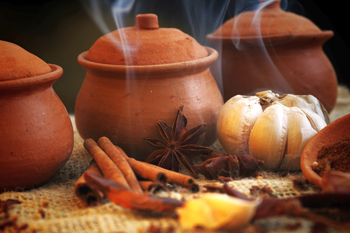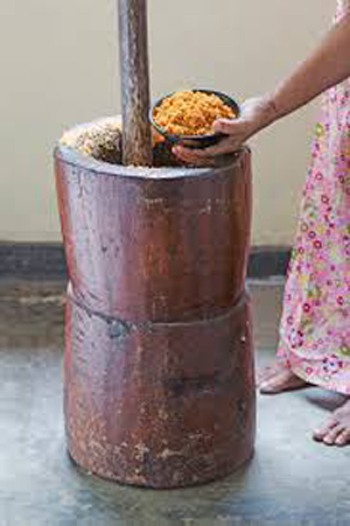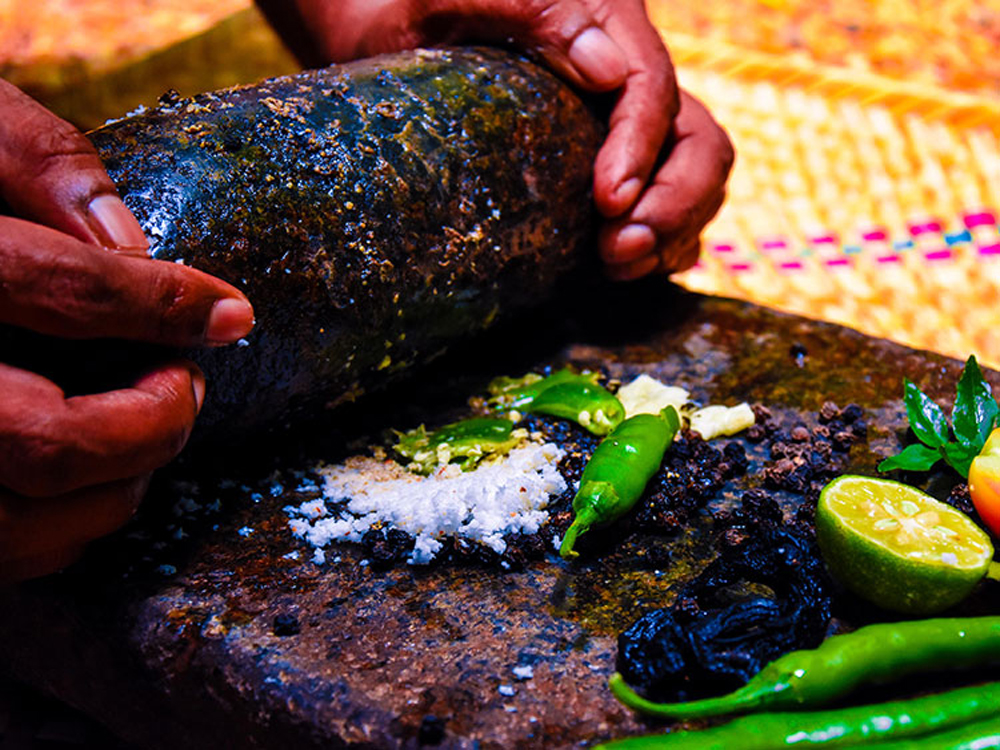
The foods in Sri Lanka depends on the individual taste. But in common most of the Sri Lankan dishes are spicy. Many Sri Lankan food items are derived from slash and burn cultivation. In Sri Lankan lifestyle cuisine plays an important role. The food culture in Sri Lanka has a very long history. The historical writing and archeological evidences prove that. During the village tour you can enjoy a mouthwatering delicious meal prepared by local women while gaining an unforgettable culinary experience.
Traditional kitchen utensils in the Sri Lankan kitchen
Clay Pots
These clay pots are called ‘walang’ .Walang” are used to cook and serve curries. There is a traditional belief among Sri Lankans that that clay increases the flavor and aroma of the food, so the curries are cooked and served in clay pots. By now these clay pots or walang have been replaced with modern materials such as aluminum but they do not give the same quality and the taste. the findings of a research show that clay has a high food-preserving ability as it protects food from bacteria. Clay pots can be placed directly on a flame when cooking and are often taken straight to the table for serving foods.
Coconut scraper
In almost all the Sri Lankan cooking, Coconut (Cocos nucifera) is used. so the coconut scraper – or ‘Hiramanaya’ helps to work tough coconut flesh into flakes. Coconut scraper is an essential kitchen utensil. it is usually clamped onto the side of a work surface. It is used to work tough coconut flesh into flakes.
Hand Made spoons
When it comes to Sri Lankan cooking spoons made from a coconut shell is an essential cooking utensil in a Sri Lankan traditional kitchen. These handmade spoons are in different sizes. Although the handmade spoons are replaced by the modern spoons sold at the market they cannot surpass its quality. Handmade spoons have heat-absorbing ability and depth. These handmade spoons are easy to use.
 Mortar and pestle
Mortar and pestle
Mortar and pestle or wangediya and molgaha are mainly used for mixing and grinding purposes. This is a must-have in a Sri Lankan traditional kitchen. Mortar and pestle help to smash the ingredients or herbs without disturbing the quality of the herb or the ingredients. They maintain the delicate the flavor.
Grinding Stone
Grinding stone or “Miris Gala” is one of the oldest kitchen utensils in a traditional Sri Lankan kitchen. Mainly this utensil is used to prepare the mouthwatering sambol and some other dishes such as ambul thiyal.
String Hopper Press
String Hopper Press or “indiappan wangediya”. This is used to prepare noodles called string hoppers. This utensil creates very fine strings.
Pittu Bambooa
This is the traditional way to make pittu – the mixture is kept inside the bamboo and then steamed. Even though similar aluminum tools are available in the market, bamboo keeps the natural flavor of the food.

